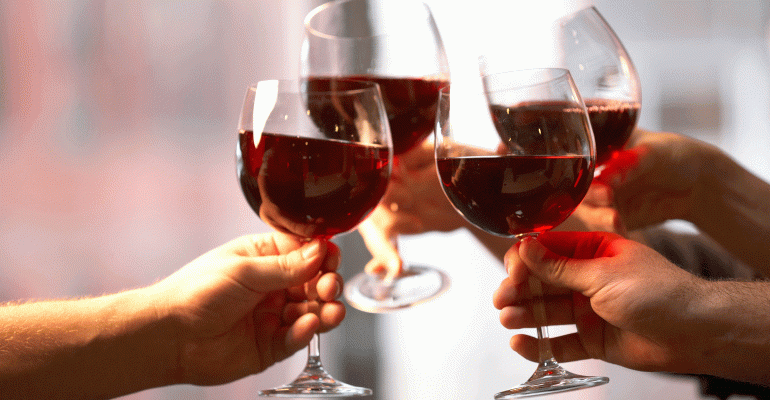Insider data shows craft beer and cocktails are having a dramatic effect on the amount of wine many operators will be able to sell this year.
A major wine industry lender predicts restaurant wine sales will be flat this year, but that doesn’t mean alcoholic beverage revenue will suffer. Patrons will still buy plenty of wine—but only after starting their evening with a craft beer or cocktail. A change in consumer drinking patterns is one reason for this no-growth scenario, but me-too wine lists aren’t helping the cause.
These are the key takeaways from “State of the Wine Industry 2017,” a 72-page analysis of the U.S. wine market produced by Silicon Valley Bank (SVB). The analysis foresees many areas of strength in the U.S. wine market next year; restaurants won’t be one of them.
SVB surveys hundreds of U.S. wine producers to compile its report, and also taps “separate confidential measures to which we are privy.” The data indicates restaurant wine sales will increase by less than one percent in dollars and will shrink two percent by volume. The lone areas of growth by volume: red varietals and blends priced above $25. But even these should increase by just one percent.
This forecast reflects a longer-term trend. The 2016 edition of SVB’s report predicted that restaurant wine sales, which had fallen dramatically in 2015 across all premium price points, would stabilize during 2016. That’s what happened, although report author Rob McMillan notes that “stabilizing off a precipitous decline is not positive for restaurant wine sales. Total restaurant wine sales and traffic are still trending lower.”
From a wine producer’s perspective, restaurant sales once accounted for a significant portion of total revenue. But those numbers have dropped “precipitously,” to the point where restaurants are no longer seen as a key sales channel.
What’s behind the falloff? Distribution, the SVB report finds, is one factor shutting small producers out of restaurant sales entirely. The result: fewer choices for operators and customers.
“Every day, restaurant lists are becoming increasingly captive to large producers with access to distribution. Big restaurant chains are served by big wholesalers, who in turn get their wine from big wineries,” the SVB report noted. Smaller producers, whose wines add energy and interest to restaurant wine lists, are often no longer part of the mix.
A more fundamental reason for stagnant restaurant wine sales: changing consumer preferences.
“Frugal Millennial consumers don’t want to pay restaurant wine markups,” SVB notes. “They know they can buy a bottle of wine at the store for less, so in the restaurant they are more likely to satisfy their consumption needs by starting with a beer or cocktail and having a glass of wine with dinner. More baby boomers are retiring and living on fixed incomes, and that influences their restaurant beverage choices as well.”
Suffice it to say that targeting the Millennial generation isn’t a winning strategy for wine producers right now. While Millennials (ages 22-38) get a lot of attention, baby boomers (ages 51-68) account for significantly more sales of American-produced fine wine. Boomers are 41 percent of the market, Millennials just 17 percent. Gen Xers (ages 39-50) hold the most promise for growth, with SVB expecting Gen X wine drinkers to consume more wine than baby boomers by 2021. In 2017, they will account for 33 percent of fine wine sales.
SVB doesn’t see much of a short-term boost coming from Millennials. The bank says this cohort’s “outsized impact has been falsely prognosticated in the trade press for at least a decade.
“The reality is the generation does not have the same financial environment to push spending compared with the baby boomer and Gen X cohorts at the same life stage. Significant headwinds include underrepresentation in the U.S. workforce, significant amounts of student debt, declining productivity and the setback in wealth accumulation during the Great Recession.”
Restaurants would be wise to tailor the non-wine aspects of their alcoholic beverage programs to fit Millennial preferences.
“While still after a premium product and experience, evidence from many sources suggests that Millennials are inclined to substitute craft beer and spirits for wine, especially on premise, and are ambivalent as to the place of origin,” the report concludes. “The youngest consumer cohort has demonstrated a propensity for frugal hedonism, meaning they are quite price conscious but don’t sacrifice quality when selecting their adult beverages.”
“Frugal hedonism” doesn’t sound like much of a rallying cry for restaurant operators. But keep the idea in mind as you fine-tune your beverage program going forward, especially if Millennials are a key part of your restaurant’s customer base.




